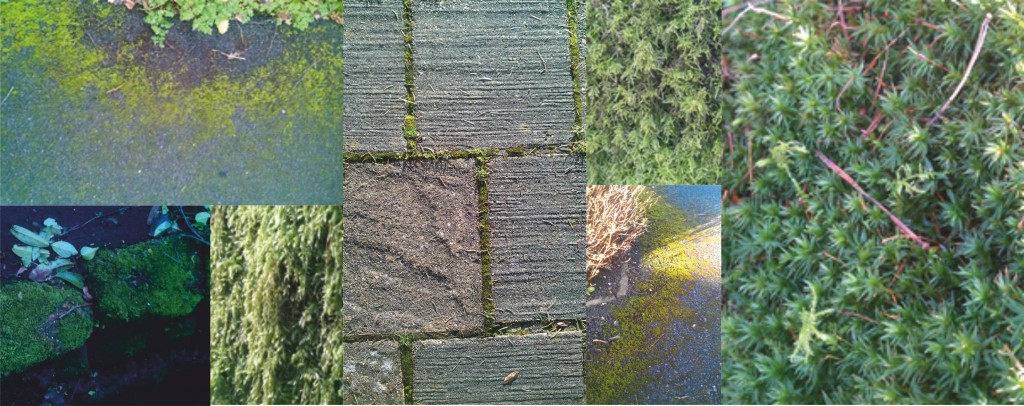This winter has now officially been declared the wettest on record, and whilst that has been disastrous for many, for our native mosses this appears to have provided ideal conditions.
Whilst walking in either the town or countryside I am struck by just how much of the velvety green stuff there is, climbing up trees, edging its way across pavements and colouring in the gaps between paving slabs, turning every surface it covers into a bright tactile cushion. It is not just the quantity and tenacity of this plant that is noticeable, the variety of species is also impressive once you start to look closely. However, although it is everywhere I don’t think I could name one single variety. With this fact somewhat gnawing away I headed to Google.

A quick visit to the Scottish Natural Heritage website revealed just how important moss (and it’s fellow bryophyte the liverwort) is, both ‘in water-retention and stabilising mobile surfaces like landslips, scree slopes and sand dunes’ and ‘providing shelter and humidity for a remarkable diversity of invertebrates’ which in turn support many larger species. Historically moss has been used by man for packaging, bedding and insulating clothing (‘‘Ötzi’, the 5,000 year-old body of a hunter found in a glacier in the Tyrol, had large quantities of moss stuffed inside his clothing’ the website reveals) and of course horticultural applications.
Specialized moss gardening is now, apparently, a recognizable hobby (Amazon list several intriguing titles for the enthusiast) and a trip to Saihō-ji, the ‘Moss Temple’, in Kyoto is a must for lovers of Japanese gardens and moss alike.
Whilst the UK BAP lists contains over 40 species of moss at risk with
such intriguing names as Triangular Pygmy-moss and Scottish Beard-moss they receive much less attention than their larger and showier relatives despite being key species at the base of the food chain. So before you reach for the jet-wash or
Jeyes Fluid to clean your patio this spring spare a thought for these tiny
plants and the wildlife they support.